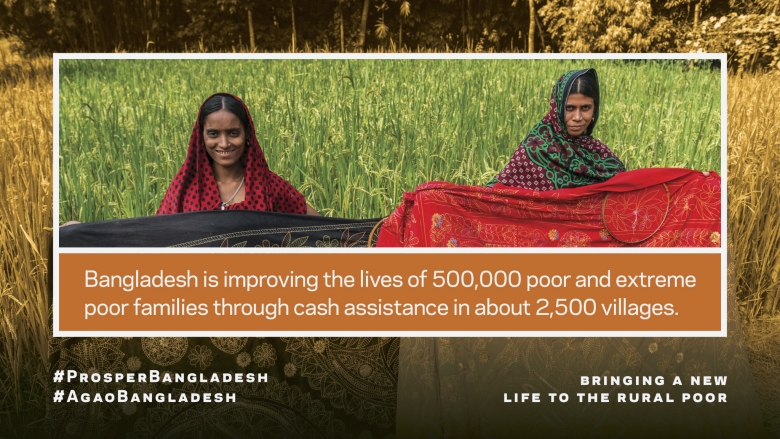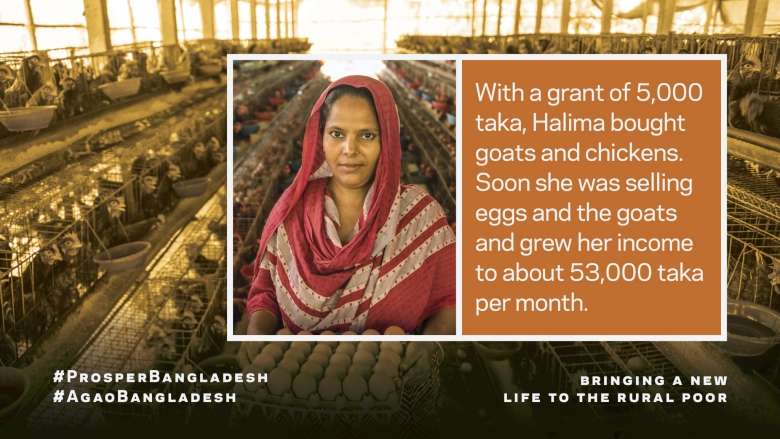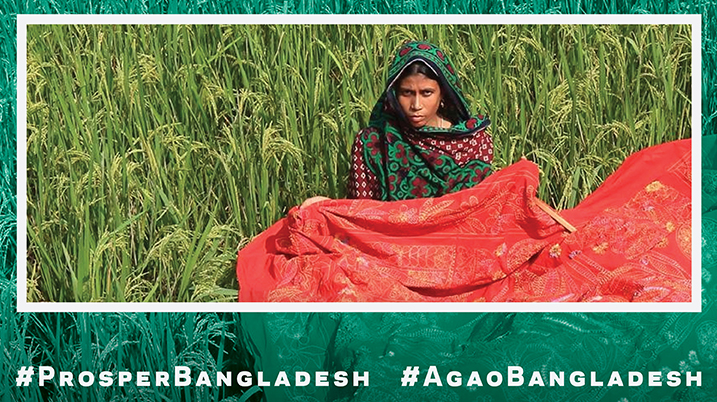Challenges – A need for economic and demographic transformation
Approximately 47 million Bangladeshis live in poverty or around the poverty line. At the same time, Bangladesh has been experiencing economic and demographic changes that could transform it into a middle-income country by 2021.
Social protection and labor, or SPL, programs and policies that address these two different, yet related realities have evolved in recent years to meet persistent and new needs. But such efforts require changes that can improve their efficacy and impact.
The Government of Bangladesh has allocated significant resources – an average of up to $4 billion annually (or 2 percent of gross domestic product, or GDP) – to implement a large number of social safety net, or SSN, initiatives. SSN includes, among other services, civil service pensions, allowances for vulnerable groups, public works, education and health care.
But existing SSN efforts are hampered by fragmentation, poor targeting, inefficiency, and leakage. Allocation of resources across 140 programs under 20 ministries reduces the impact of programs and gives rise to duplication in program objectives and beneficiaries. Poor targeting means only a third of eligible Bangladeshis participated in least one social assistance program in 2010. Of those program participants, almost 60 percent recipients were non-poor. Also, a large share of resources allocated for SSN programs – whether cash or food – do not reach beneficiaries, and programs aimed at children under five years and at the elderly and people with disabilities in many cases are limited.
The majority of SSNs address the rural poor. But large and fast-growing numbers of Bangladeshis are moving every year from rural to urban areas, and the country’s social security system must therefore align itself to cater to a growing urban population.
The Government of Bangladesh has enacted a National Social Security Strategy in 2015 to create a social protection system that is inclusive, better mitigates lifecycle risks and prioritizes the poorest and most vulnerable.
More effective targeting of those truly in need could potentially reduce the poverty rate by 1.5 percentage points, and a shift toward cash-based transfers can improve the efficiency of difficult-to-administer and costly food-security programs. Also, automated administrative systems and electronic payments (via secure cash cards or mobile phones) can promote more transparency and reduce leakage.
Further, the government must invest in skills and education for youth and link them to productive employment through domestic job creation and overseas migration, especially in the Middle East and Southeast Asia.
The country also needs to do more to protect the elderly in a fiscally sustainable manner. This will require providing the working-age population with incentives and opportunities to save for retirement and insure against risks.




